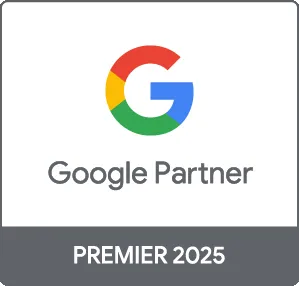Google Ads is a powerful platform for driving targeted traffic to your website and increasing conversions. However, to truly unlock its potential, optimisation is essential. In this post, we'll cover key strategies and best practices for Google Ads optimisation that can help you achieve better results and a higher return on investment (ROI).
Understanding Google Ads Optimisation
Google Ads optimisation involves enhancing your ad campaigns to improve their performance, relevance, and effectiveness. This can include adjusting bids, refining keywords, and improving ad copy. By focusing on optimisation, you ensure that your ads reach the right audience and generate meaningful engagement.
1. Conduct Thorough Keyword Research
Keyword research is the cornerstone of effective Google Ads campaigns. Here are some tips to consider:
- Use Keyword Planner: Google’s Keyword Planner tool can help identify relevant keywords with high search volumes and low competition.
- Focus on Long-Tail Keywords: These are often less competitive and can lead to higher conversion rates compared to broad keywords.
- Analyse Competitor Keywords: Understand what keywords your competitors are targeting and identify gaps you can exploit.
2. Improve Ad Copy and Creatives
Your ad copy plays a crucial role in attracting clicks and driving conversions. Consider these strategies:
- Write Compelling Headlines: Use strong action verbs and highlight unique selling points (USPs) to engage users.
- Incorporate Keywords: Including keywords in your ad copy can improve relevance and Quality Score, which can lower your cost-per-click (CPC).
- A/B Testing: Test different versions of your ads to see which perform best and continuously refine your messaging.
3. Use Ad Extensions Effectively
Ad extensions provide additional information about your business and can enhance your ads' visibility. Here are some extensions to consider:
- Sitelink Extensions: Link to specific pages on your site.
- Call Extensions: Allow users to call you directly from the ad.
- Location Extensions: Show your business address to encourage local visits.
4. Optimise Landing Pages
Having an optimal landing page is critical for improving your conversion rate. Here’s how to ensure your landing pages are effective:
- Align Content: Ensure your landing page content matches the promises made in your ad.
- A/B Testing: Like your ads, test different landing page layouts and content to see what converts best.
- Mobile Optimisation: Ensure your landing pages are responsive and provide a seamless experience on mobile devices.
5. Monitor Performance and Adjust Strategies
Regularly reviewing campaign performance is vital for optimisation. Key performance indicators (KPIs) to track include:
- Click-Through Rate (CTR): Indicates how effective your ads are at capturing attention.
- Conversion Rate: Measures how many clicks lead to desired actions (like purchases or sign-ups).
- Quality Score: A quality metric that influences your ad rank and CPC.
Conclusion
Optimising your Google Ads campaigns is an ongoing process that can lead to improved performance, higher return on investment, and better engagement with your target audience. By focusing on keyword research, ad copy improvement, effective use of ad extensions, landing page optimisation, and continuous performance monitoring, you can take your Google Ads strategy to the next level. If you're looking for professional assistance with Google Ads optimisation, contact Prebo Digital today and let our experts help you maximise your ad spend!





